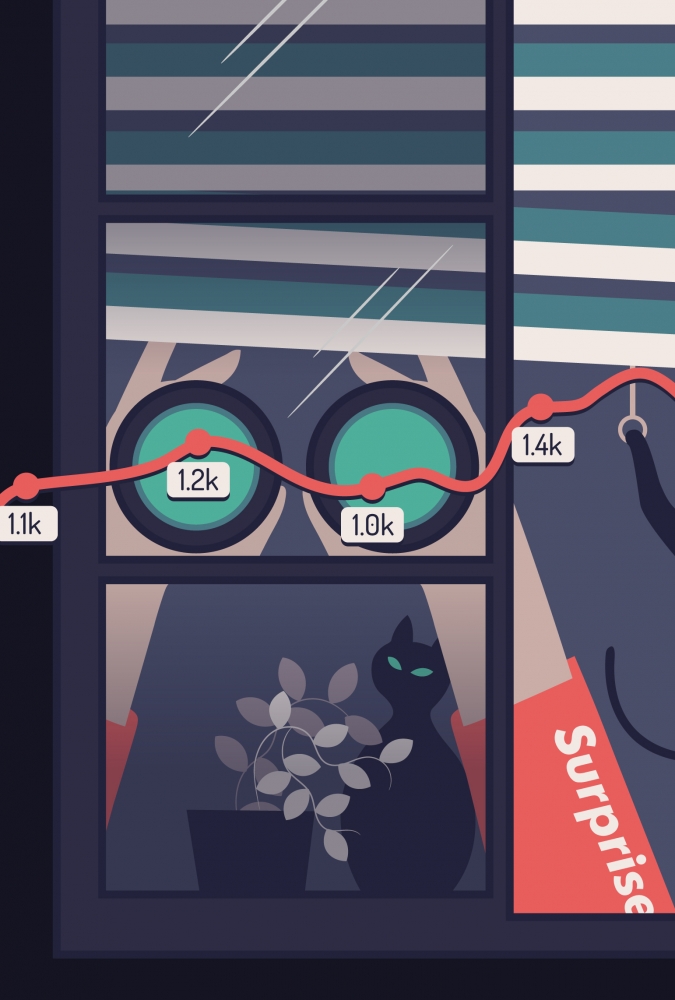
Maybe you’ve been in a similar situation: it’s a glorious Friday afternoon and everything is wrapping up quite nicely when — BAM! Your boss alerts everyone on Slack that a client has found a potentially critical issue that your team must investigate immediately or else your laptops will burn, you will all obviously be fired, and your business partners will be lost forever.
Why are we doing this? That’s all it took to get a conversation started around the significance of this particular project, which uncovered not only a lack of significant potential revenue, but also that the client had been assuming their authority allowed them to blame and harass the project manager at their own convenience. Problem solved, and lost weekend recovered.
Moving quickly on decision making can be a challenge for large organizations, with their complex hierarchies of management, silos of business units, and all those relationships. However, getting approval to make considerable and sometimes drastic changes as a Lean Change Agent in a large organization can be straight-forward, and the opportunities to improve laborious and outdated processes are around every corner.
How can you make similar broad strokes of improvement in a flat organization, where everyone is their own boss to an extent and the hope of sign-off or approval on a desired change will most likely remain just that — hope?
Lean techniques are no stranger to startups and small bands of tech savvy groups. In his book, The Lean Startup, Eric Ries showcases how the application of Lean principles can create an environment of continuous innovation.
There are 3 Lean concepts that provide guidance on where to look within an organization to improve processes or add solutions for the benefit of the group and its customers. These are the 5 Lean Principles, the 8 Wastes, and the DMAIC model (Define, Measure, Analyze, Improve and Control).
Perfection is the relentless pursuit of continuous improvement, which once tapped into it can provide amazing benefits.
The 5 Lean Principles (Value, Value Stream, Flow, Pull and Perfection) provide a framework for defining tasks and activities in a way that enables maximum benefit. Determining which tasks and activities are adding value, as defined by what the customer is willing to pay for, can be a valuable exercise in itself. Thinking of ways to map or model regular and new activities in a way to clearly show the value and non-value steps of a process is another key exercise.
Flow deserves its own focus for observing its application within a small flat group. Continuous Integration can be a key source of continuous improvement. It’s also something that you can revisit periodically within different projects and frameworks to see how its application currently operates, or to identify ways in which it may need modification.
Pull involves responding to downstream customer demand. Being aware and ready for events like unexpected contract changes is a good thing to keep in mind. Also, when a customer has customers of their own further downstream, a bullwhip effect can create problems for your group — unless you’ve been thinking Lean and have prepared for that very scenario.
Perfection is the relentless pursuit of continuous improvement, which once tapped into it can provide amazing benefits. Luckily, many flat organizations are comprised of like-minded individuals who got to where they are in their careers through similar efforts, even though they did not necessarily know that what they have been doing already has similarities to something like Lean process improvement.
The 8 Wastes are defects, over production, transportation, waiting, inventory, excessive motion, excessive processing, and underutilized people. Not all of the wastes are immediately apparent when looking at life within a flat organization. However, redefining these wastes in terms of communication, code, documentation, or data can reveal all kinds of areas for potential Lean improvement.
Defects are bugs or significant mistakes. Overproduction is less common in a flat organization, at least when they’re already running lean as it is, but overproduction can be thought of in terms of excessive processing. Transportation ties into excessive motion, where you can consider the flow of information and communication, in relation to assets like design files and codebases.
Waiting is a constraint that leads to a lack of continuous improvement within an organization. Starting too slow, underestimating project complexity, or having an unclear communication process can lead to large periods of waiting, which all add up and can eventually lead to killing a project. Find creative ways to work around blockers. Inventory also needs reframing in terms of things like code, design assets, or even confluence documentation — all of which may be neglected and quietly slipping into a problematic state. Excessive motion and excessive processing are common, especially when framed in terms of communication, assets, and documentation. Underutilized people can result from various reasons, but this is another big one to watch out for.
So, all of that can be a lot to consider, and as Ries notes, “Our current problems are caused by trying too hard at the wrong things.” Luckily, frameworks like the DMAIC model help create a cycle of opportunity, where you can routinely look for new ways to improve familiar tasks and activities.
Flat organizations can work well in small groups, but most do not scale beyond a significant number of members. The benefits of flat organizations can be seen in their typically well-trained and engaged employees, who tend to move quickly and efficiently. From a Lean perspective, the question becomes how to highlight or emphasize these characteristics.
While it can be challenging to find the right time and place to work through a full pitch on your latest Lean idea, the more you practice doing so will create quantifiable results for the entire group — and your customers will thank you.
Flat organizations are not without their own unique sets of challenges, which can be tricky to reveal or even notice. Informal cliques, soft power of popular employees, work pushed off onto certain employees, unprofessional attitudes, and even a lack of diversity can present serious challenges and issues for other members of a flat group. From a Lean perspective, the question becomes how Lean principles and waste removal can influence these challenges in a consistently positive way.
In the book Pitch Anything, Oren Klaff outlines a proven method that helps to overcome all of these issues. It’s about understanding that when you’re addressing a problem needing modification, the audience’s brains are processing what you’re proposing at a reptilian level of the brain, where fight or flight rules the game. Any logical argument or explanation turns into “blah, blah, blah” in most cases — be it at a conscious or subconscious level.
Klaff’s entire method adds a new tool for the Lean Change Agent in a flat organization: STRONG (Setting the frame, Telling the story, Revealing the intrigue, Offering the prize, Nailing the hook point, and Getting a decision). While it can be challenging to find the right time and place to work through a full pitch on your latest Lean idea, the more you practice doing so will create quantifiable results for the entire group — and your customers will thank you.
Illustration by Agnieszka Grajada.


